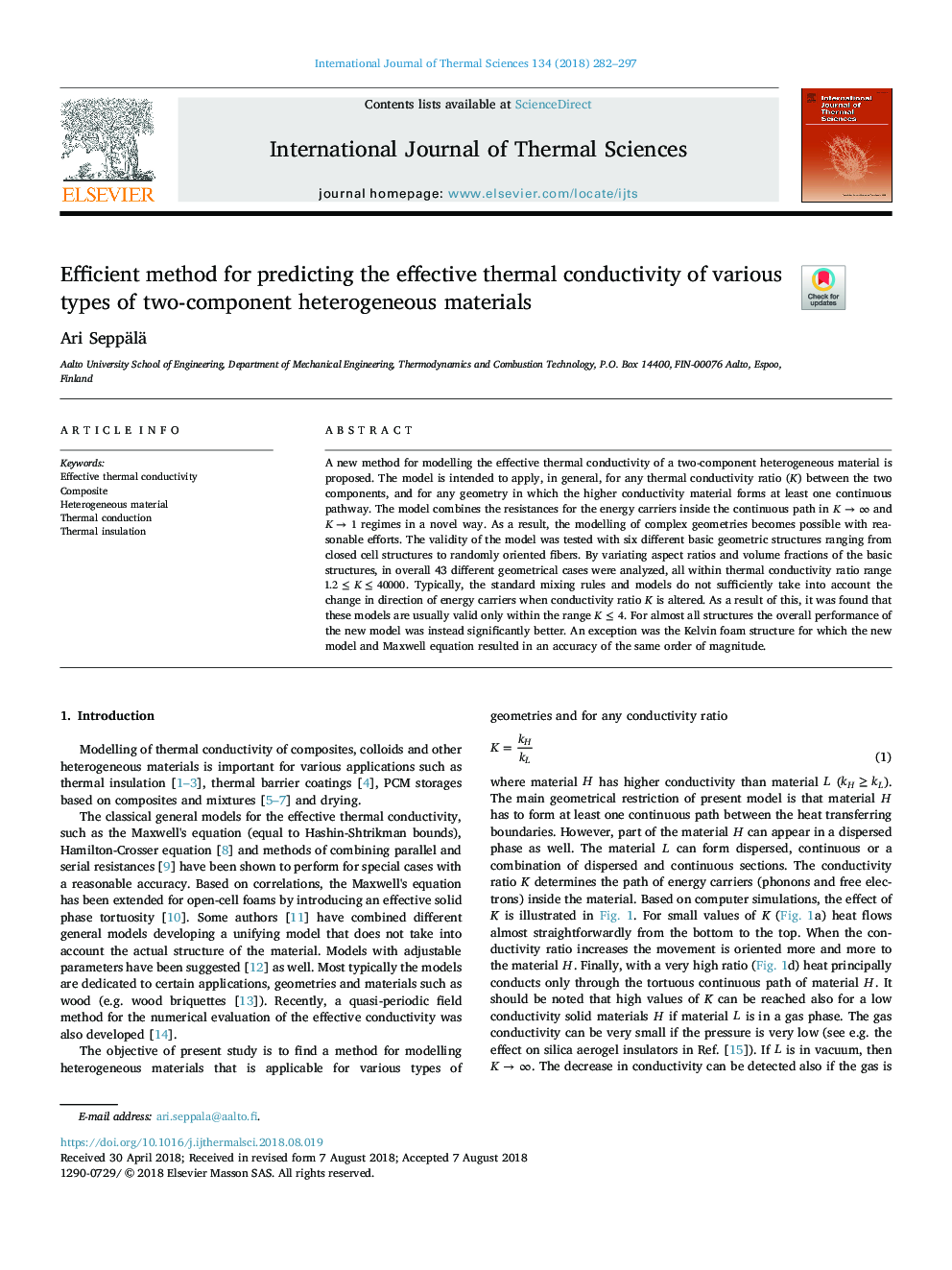| Article ID | Journal | Published Year | Pages | File Type |
|---|---|---|---|---|
| 7060527 | International Journal of Thermal Sciences | 2018 | 16 Pages |
Abstract
A new method for modelling the effective thermal conductivity of a two-component heterogeneous material is proposed. The model is intended to apply, in general, for any thermal conductivity ratio (K) between the two components, and for any geometry in which the higher conductivity material forms at least one continuous pathway. The model combines the resistances for the energy carriers inside the continuous path in Kââ and Kâ1 regimes in a novel way. As a result, the modelling of complex geometries becomes possible with reasonable efforts. The validity of the model was tested with six different basic geometric structures ranging from closed cell structures to randomly oriented fibers. By variating aspect ratios and volume fractions of the basic structures, in overall 43 different geometrical cases were analyzed, all within thermal conductivity ratio range 1.2â¤Kâ¤40000. Typically, the standard mixing rules and models do not sufficiently take into account the change in direction of energy carriers when conductivity ratio K is altered. As a result of this, it was found that these models are usually valid only within the range Kâ¤4. For almost all structures the overall performance of the new model was instead significantly better. An exception was the Kelvin foam structure for which the new model and Maxwell equation resulted in an accuracy of the same order of magnitude.
Keywords
Related Topics
Physical Sciences and Engineering
Chemical Engineering
Fluid Flow and Transfer Processes
Authors
Ari Seppälä,
